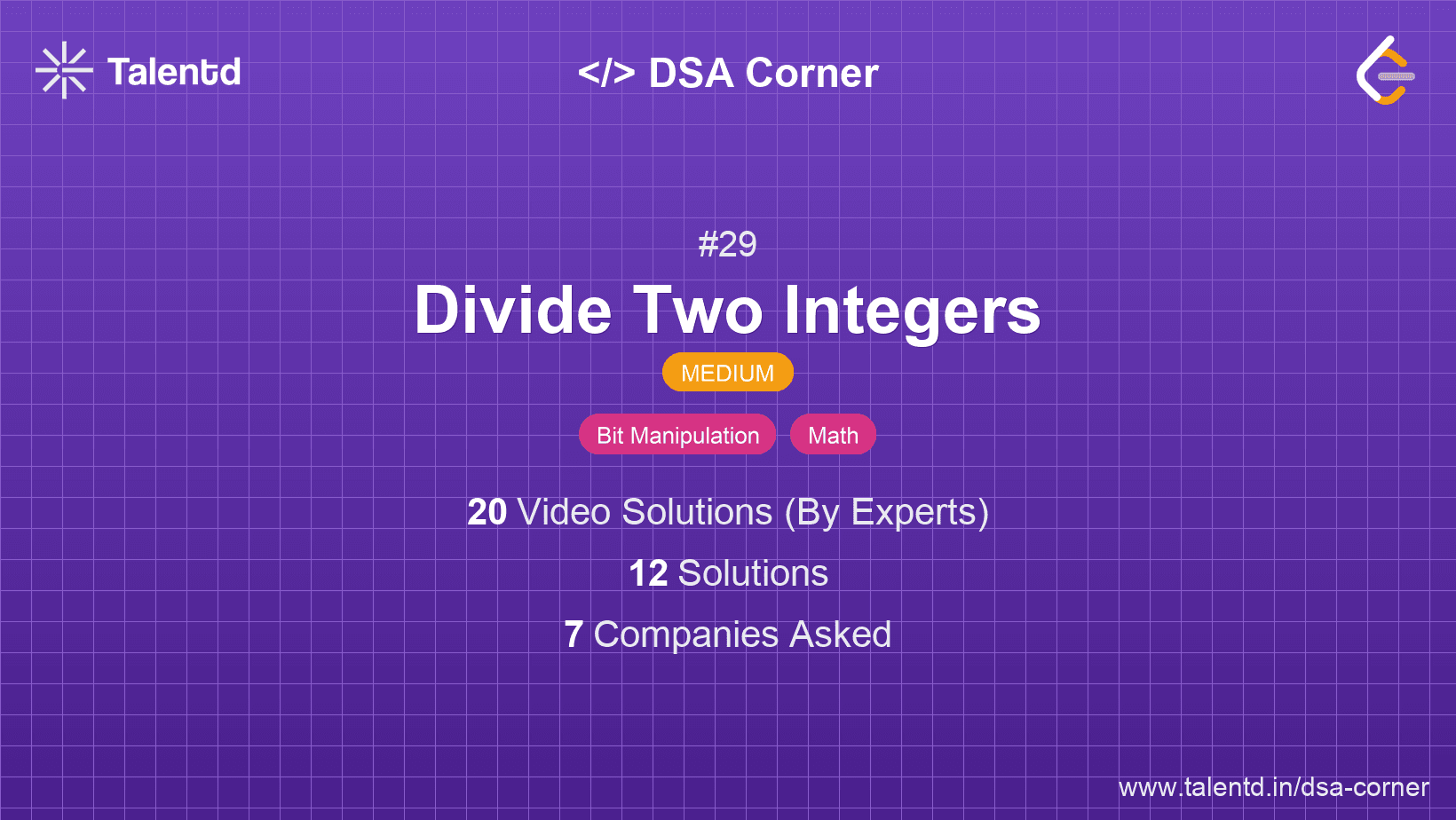
Sponsored
Sponsored
This approach uses repeated subtraction to calculate the quotient. The idea is to keep subtracting the divisor from the dividend until the dividend
Time Complexity: O(n), where n is the result of the division. This can be inefficient for large numbers.
Space Complexity: O(1), as no extra space is used.
1public class Solution {
2 public int Divide(int dividend, int divisor) {
3 if (divisor == 0) return int.MaxValue;
4 if (dividend == int.MinValue && divisor == -1) return int.MaxValue;
5 int sign = ((dividend < 0) ^ (divisor < 0)) ? -1 : 1;
6 long ldividend = Math.Abs((long)dividend);
7 long ldivisor = Math.Abs((long)divisor);
8 int quotient = 0;
9 while (ldividend >= ldivisor) {
10 ldividend -= ldivisor;
11 quotient++;
12 }
13 return sign * quotient;
14 }
15}The C# implementation brings together elements of approach in other C-based languages. Using Math.Abs(), it handles large number calculations safely using longs. The iteration relies on repeated subtraction while tracking division results effectively.
Bit manipulation provides an optimized method to divide without causing repeated subtractions. By efficiently finding how many times the divisor can be shifted left (multiplied by two) in the dividend range, we can ascertain parts of the quotient to sum incrementally. This halves the number of operations compared to repeated subtraction.
Time Complexity: O(log n), where n is the approximate number of bits in the dividend with respect to bit manipulation.
Space Complexity: O(1), as shifts occur without additional structures.
1Using an extensive logical bit evaluation per shift comparison, Python methodically manages bit examination to reduce dividend using viable divisor strengths. The technique achieves efficient quotient identification by summing constants against shifted checks typically.